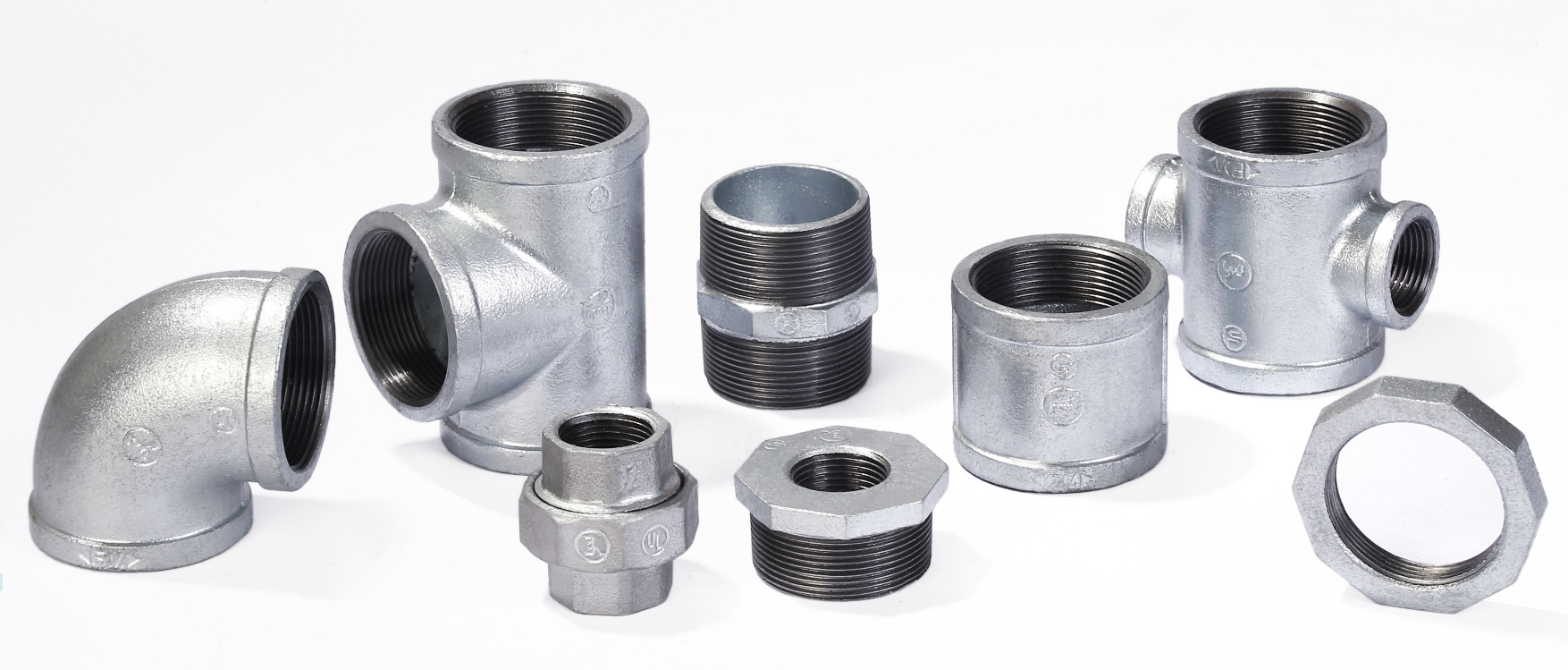Sep. 15, 2025
You can’t run construction site piping without galvanized pipe fittings—plain and simple.
They come in all kinds of designs, and that’s what makes them work: need to turn a pipe? Change where it flows? Connect two lines? These fittings handle it all. No guesswork, no jury-rigging—just get the right one, and your water lines, fire protection setups, and ventilation systems end up exactly where the design says they should.
No fittings like these? You’re stuck with misaligned pipes or systems that don’t work right—something no construction crew can afford.

When your pipes have to bend around walls or structural columns, galvanized elbows are what you reach for—no exceptions.
Need a sharp right-angle turn? Grab a 90° elbow. A gentler angled connection? Go with a 45° one. They’re the standard because they just work—no messing with ill-fitting parts to get the direction right.
And that hot-dip galvanizing? It’s not just for show. It adds a even layer of protection all over the elbow, so they don’t rust or get damaged by moisture in the building. These elbows stay strong, year after year—no unexpected breaks that mess up your piping.
Where pipelines require diversion, galvanized tees direct the main pipeline's fluid in two different directions, a common example being fire risers supplying water to each floor. Crosses are used for more complex cross-distribution. The unobstructed internal design of these fittings minimizes fluid resistance and ensures stable system pressure.
Where reducers come in—they smooth out the transition so flow stays steady.
The best part for your crew? All these fittings use standard threads. You don’t need special tools or extra time to get them tight—just twist, secure, and move on. It cuts down on installation time big time, which keeps your project on schedule.
And let’s not forget the galvanized surface. Whether these fittings are sitting in storage waiting to be used or getting handled on-site, they won’t rust. No more pulling parts out of the warehouse only to find they’re corroded—grab ’em, install ’em, and they work right away.
When you’re choosing galvanized pipe fittings for a construction project, it all comes down to three no-nonsense factors—ones that actually matter for getting the job done right:
First, that zinc coating isn’t just for looks. It keeps fittings from rusting long-term, which is a big deal in damp building interiors. No more replacing corroded parts mid-project or dealing with leaks down the line.
Second, the cast steel build has real muscle. These fittings can handle the system’s working pressure without bending or breaking. You don’t have to worry about weak spots messing up your water, fire, or ventilation lines.
And finally, they’re made to standard—so they play nice with every type of pipe you’re using. No guessing if a fitting will fit, no last-minute runs to swap parts. It makes both procurement and installation way simpler, which keeps your timeline on track.
When picking pipe fittings for your project, focus on two key things:
Make sure the galvanized coating is good and threads are accurate—both need to meet national standards.
Choose suppliers with fire protection product certification (it affects service life and project acceptance).
Our galvanized pipe fittings meet national standards for all construction needs. Need technical specs or pricing? Reach out for details and procurement options.
SAFER
PRODUCT INFO
ABOUT JIANZHI
TECH DATA
Contact Us
E-mail: sales1@jianzhi-fitting.com
Tel: +86 18698027872
Office In Tianjin:
Heping District, Tianjin, China.
Production Base 1:
Chifeng, Inner Mongolia, China.
Production Base 2:
Tangshan City, Hebei Province, China.
Production Base 3:
Schelei Street,Baicoi City,Prahova County,Romania
Service email: info.ro@jianzhi-fitting.com
Sales email: market.ro@jianzhi-fitting.com
Tel: +40(755)011 849
